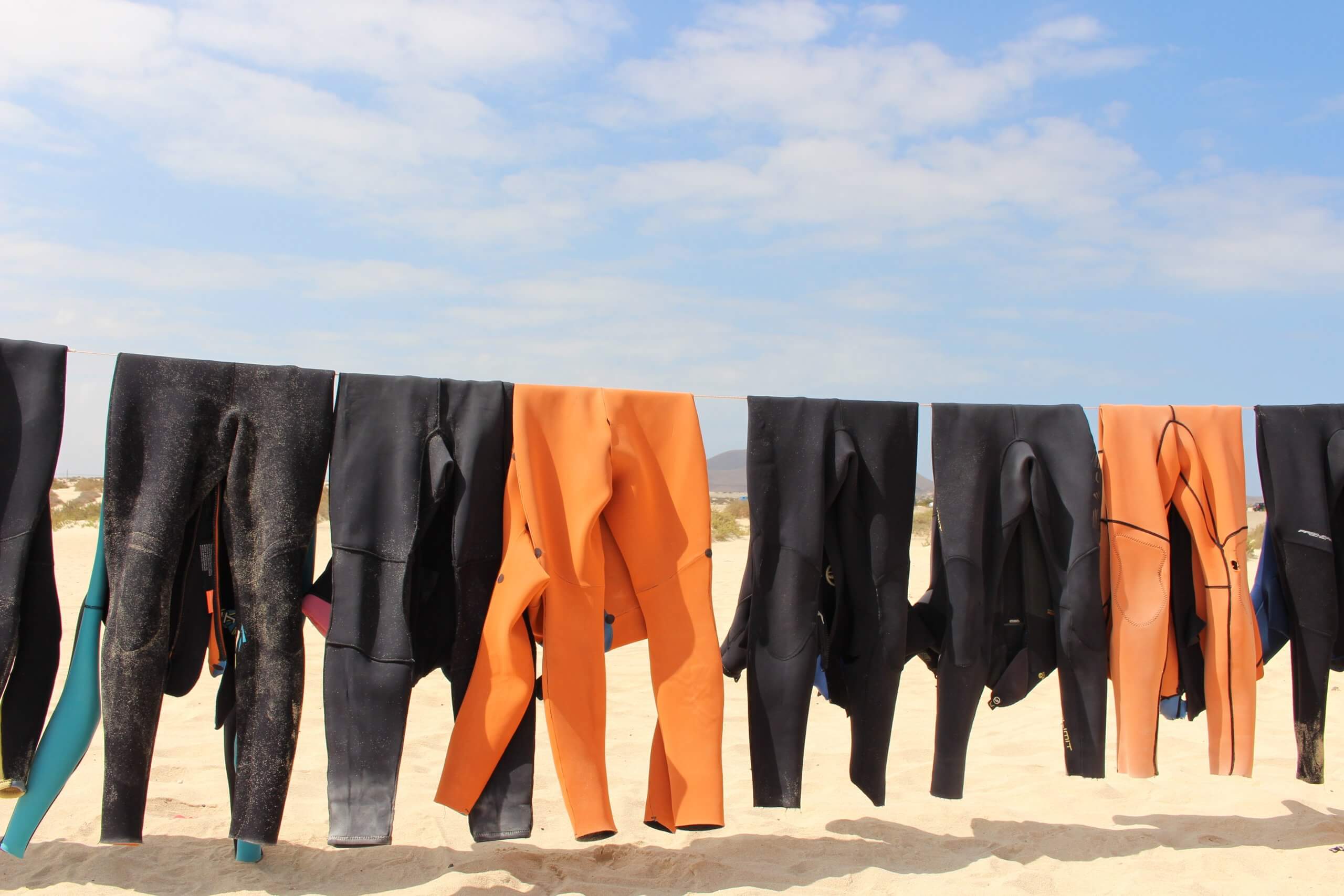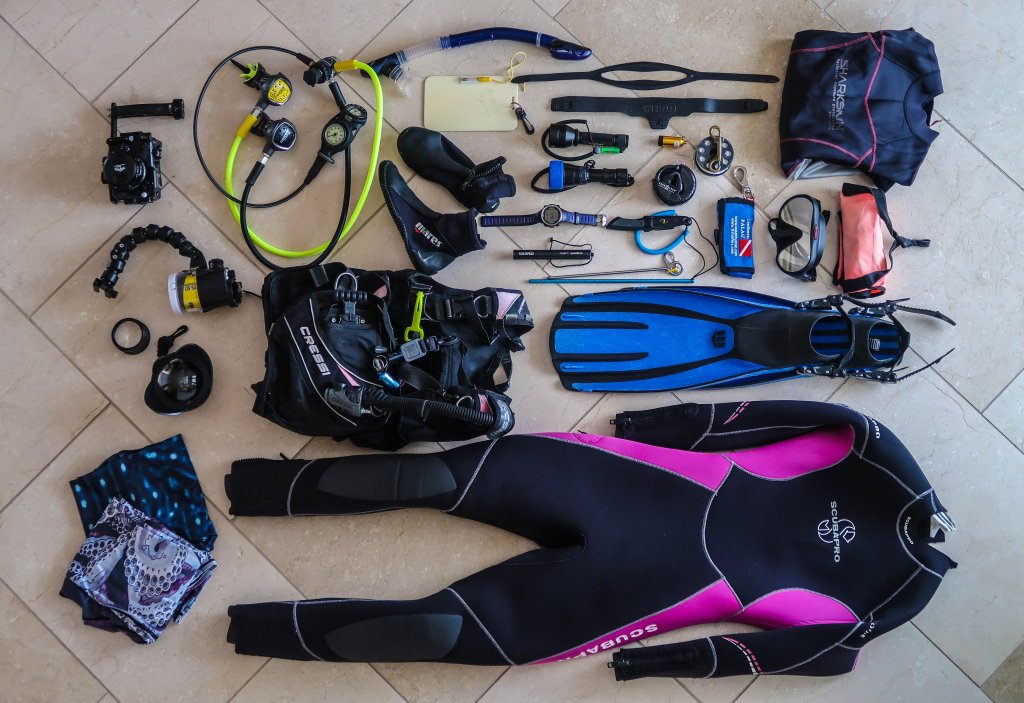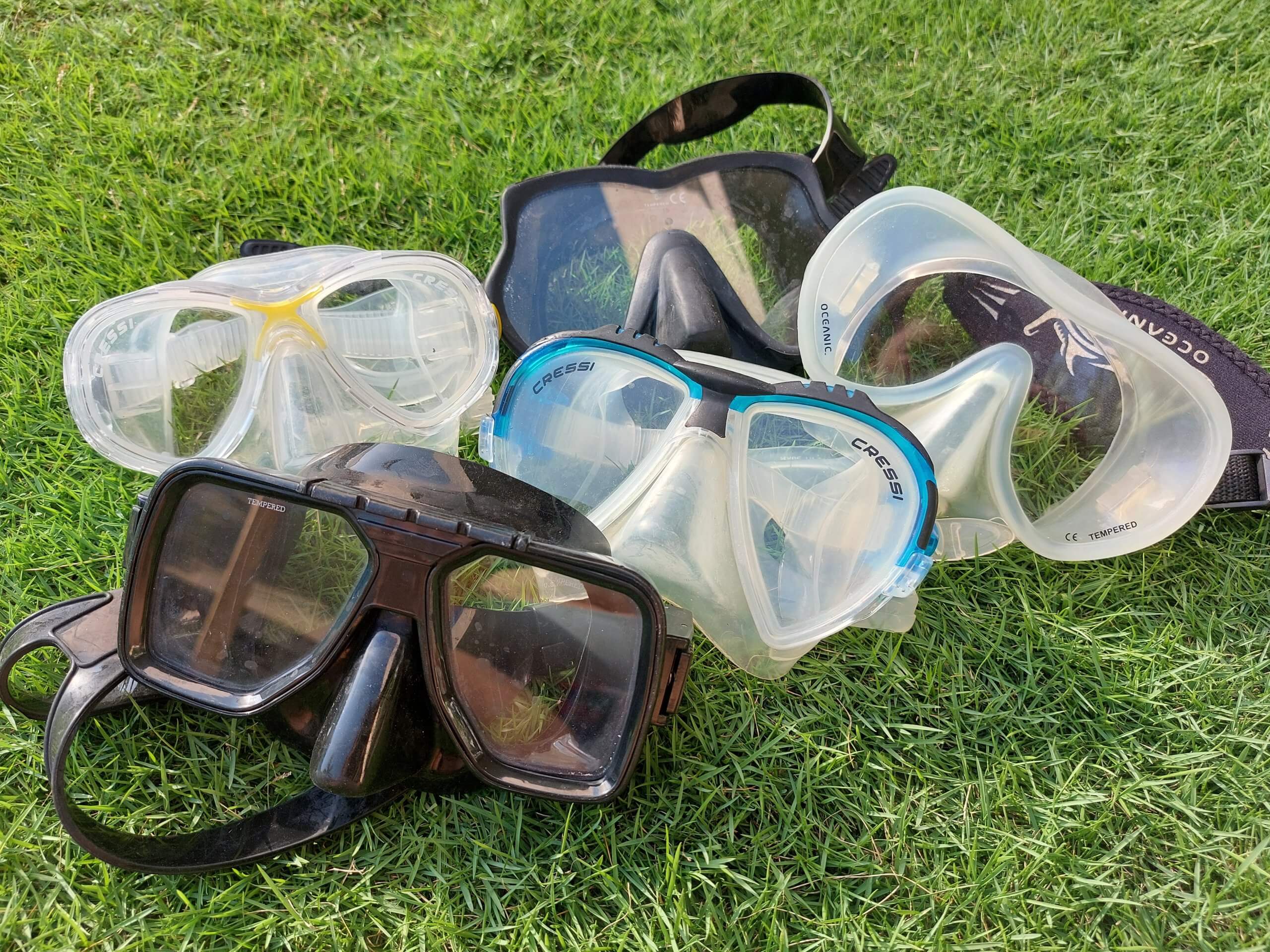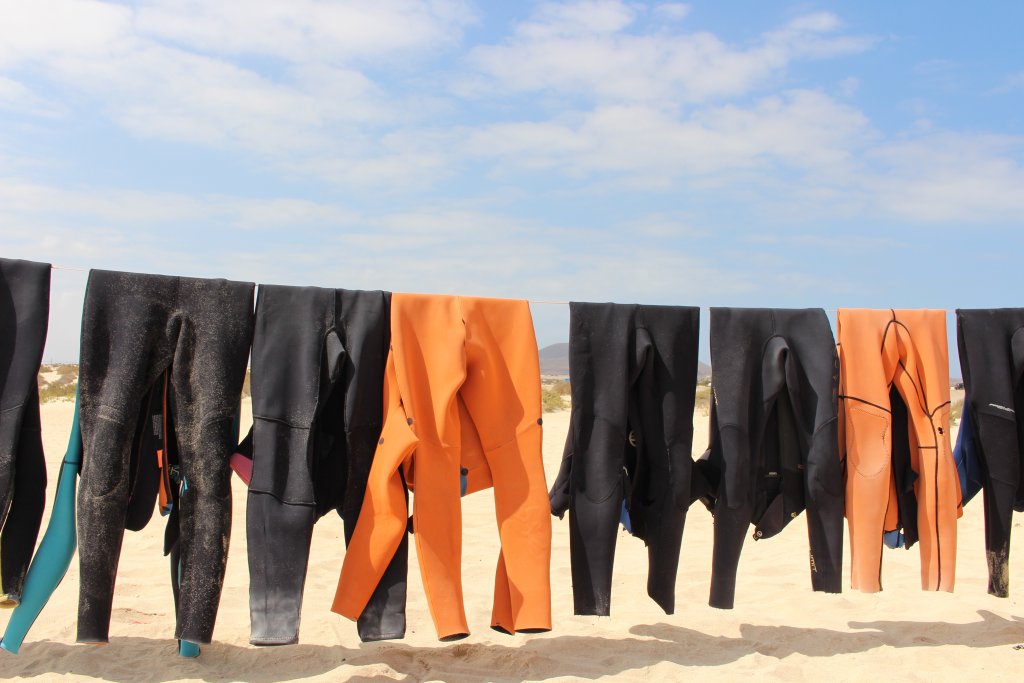
Top 10 Essential Equipment Items for Scuba Diving
Preparing for scuba diving involves equipping yourself with essential gear that ensures comfort, safety and efficiency underwater.
Whether you’re embarking on your first scuba course or upgrading your equipment for advanced training, having the right gear is crucial.
In this comprehensive guide we will explore the top 10 essential scuba diving gear items you will need for a successful and enjoyable diving experience.

1. Mask
A well-fitting diving mask is essential for clear vision underwater. Choose a mask with a comfortable silicone skirt and tempered glass lenses to ensure durability and clarity. The following are the different types of scuba diving masks available:
- Single Lens Mask: This type of mask features a single large lens that provides a wide field of vision. Single lens masks offer an unobstructed view and are popular among divers who prefer a simple design.
- Dual Lens Mask: Dual lens masks have two separate lenses divided above the nose pocket. This design is often favoured for prescription lens inserts, for divers requiring vision correction.
- Frameless Mask: Frameless masks have a skirt attached directly to the lens, eliminating the outer frame. This design reduces bulk and provides a more compact profile, making it ideal for travel.
- Full Face Mask: Full face masks cover the entire face offering a wider field of vision and enabling natural breathing through the nose and mouth. They are often used in speciality diving applications and commercial diving. They are not recommended for recreational diving.
- Low Volume Mask: Low-volume masks have a smaller air space between the lens and face which reduces the amount of air making clearing the mask easier. These masks are preferred by freedivers and spearfishers.
We at Jaguar Divers like frameless and low volume masks as they tend to make clearing easier and keep a 100% field of vision.

2. Fins
Diving fins enhance your propulsion and manoeuvrability underwater. Look for open-heel fins that can be worn with neoprene dive boots for added comfort and warmth. The fins should provide optimal thrust with minimal effort, allowing you to conserve energy during dives.
- Open Heel Fins: Open-heel fins feature an adjustable strap that wraps around the heel allowing for a secure fit with various boot sizes. They are versatile and suitable for cold-water diving with neoprene boots.
- Full Foot Fins: Full-foot fins are designed to be worn barefoot or with thin socks. They are lightweight and compact making them ideal for warm-water diving and travel.
- Split Fins: Split fins have a split blade that mimics the movement of a dolphin’s tail reducing resistance and fatigue while providing propulsion. They are not efficient for propulsion and we do not recommend them for scuba diving.
- Paddle Fins: Paddle fins have a solid blade with minimal flex, offering powerful propulsion for strong swimmers. They are suitable for divers who prefer a more traditional fin design.
- Travel Fins: Travel fins are compact and lightweight making them easy to pack and carry for dive trips. They typically feature a shorter blade and folding or adjustable designs.
Here at Jaguar Divers, we favour open heel fins which are stiff enough to provide a good thrust and efficient propulsion (soft floppy fins provide little thrust). Avoid split fins at all costs.
3. Wetsuit
A wetsuit provides thermal insulation and protection against abrasions while diving. The thickness of your wetsuit will depend on water temperature and personal comfort.
Consider the environment in which you will be training.
- Skin: Skins, rash vest and rash leggings provide no thermal protection, but they protect the wearer from sun (if UV rated) and small stinging creatures that may be in the water. They can be found in many fun colours and patterns.
- 3mm: these are available I both long and short (full sleeve and legs or short). These are suitable for warm waters and are easy to move in.
- 5mm: Suitable for colder waters such as the Mexican cenotes. Slightly harder to put on and move in but well worth the warmth they provide.
- Semi dry or 7mm: If you get cold easily you can get as thick as a 7mm wetsuit or layer up your 3mm and 5mm. Semi dry 5mm or 7mm wetsuits also have special zips and fastenings that limit water flow in your wetsuit to the max to provide additional heat protection.
And if it is really cold you can go for a dry suit and undergarment which will keep your body dry and safe from coldness.

4. Regulator Set
The scuba regulator delivers air from your tank to you at ambient pressure. Choose a reliable regulator set that includes the first stage, second stage (primary regulator), alternate air source (octopus) and submersible pressure gauge (SPG).
Regulators are built around two main systems:
- Piston First Stage: Piston first stages use a simple mechanism that relies on a piston to control airflow. They are robust and reliable, making them suitable for recreational diving in moderate conditions.
- Diaphragm First Stage: Diaphragm first stages use a diaphragm to control airflow and are isolated from the environment making them more resistant to contaminants and ideal for cold-water diving and technical diving applications.
There are also two types of regulator connections:
- Yoke Connection: Yoke regulators attach to the tank valve with a yoke clamp system securing the regulator to the tank via a yoke screw knob. This type of connection is commonly used and compatible with most standard scuba tanks.
- DIN Connection: DIN regulators screw directly into the tank valve, providing a more secure and streamlined connection. DIN connections are favoured for technical diving and offer higher pressure ratings than yoke connections.
Opt for regulators with balanced designs for smooth breathing. A balanced first stage regulator offers consistent airflow regardless of depth and tank pressure. An unbalanced regulator will become harder to breathe with as depth increases and or tank pressure decreases (this is an extra safety design to let you know you are running out of air, but no good diver would ever let their tank get this low to feel – 20bar/300psi). You can also choose regulators with adjustable knobs where you can regulate the airflow and the breathing effort, to suit different diving conditions.
We at Jaguar Divers like DIN connection (because it is stronger and more streamlined than Yoke) and piston (because they work flawlessly in our warm waters and are easy to service). However, if you are going to dive in cold water (<10 degrees) then a diaphragm first stage would be better.

5. Buoyancy Control Device (BCD)
The BCD allows you to control your buoyancy underwater and provides a means to attach your tank securely. Look for a BCD with integrated weight pockets for easy weight distribution and streamlined diving. Choose a BCD with adjustable straps and an ergonomic design to ensure a comfortable fit during extended dives.
- Jacket-Style BCD: Wrapping around your torso like a jacket. They offer buoyancy and stability, featuring pockets and multiple adjustment points.
- Back-Inflation BCD: Positioned behind your back, back-inflation BCDs promote a streamlined profile and freedom of movement.
- BPW: Wing-style BCDs have a donut-shaped air bladder that wraps around the tank, offering enhanced buoyancy control and minimizing drag, preferred by technical and experienced divers. They also have a metal backplate (normally steel but can be aluminium or carbon fibre when designed for travel) that will reduce the amount of extra weight you need to add to your rig.
Choosing the right BCD depends on your diving style, comfort preferences and buoyancy control needs during training and future dives. We recommend trying diving with a few styles 1st from your dive shop as you dive before making a commitment.
6. Dive Computer
A dive computer is a vital piece of equipment that monitors depth, dive time and decompression limits. Enhancing your safety during dives. Choose a dive computer with intuitive features suitable for beginners such as easy-to-read displays and audible alarms.
Higher prices will get you smaller watch like models and a greater number of features, but don’t feel you need the top model. There are many features you won’t need for many years as a beginner.
Features you may want are
- Size: Larger computers are cheaper compared to their smaller watch like versions. Larger faces are earlier to read but bulkier to wear.
- Nitrox integration: Most modern computers will allow you to choose between air or nitrox modes and use up to 50% oxygen. However, if you are doing technical diving you may wish to opt for a computer that will allow up to 100% or multiple gases on the dive.
- Bluetooth / USB connectivity: The cheapest computers will allow you to see your past 100 dives or so on the screen, but splashing out on one which has USB or Bluetooth connectivity will allow you to connect to your phone or laptop can mean you save all of your past dives. You can then import your data into apps to see the data easily and analyse it.
- Backlight: Having a computer with a backlight or even a fully lit screen can be useful for night or darker environment dives.
- Compass: Digital compasses in our opinion are unreliable as so not worth the cost, but they can be a handy backup sometimes.
Opt for a model with built-in dive logs and USB / Bluetooth connectivity for data transfer and analysis.

7. Dive Knife / Cutting Tool
A dive knife or cutting tool is a safety device used for entanglements or removing lines caught on marine life. Knives are best for cutting through thicker fishing nets and ropes. Cutting tools are generally smaller and easier to carry but can only cut thin lines and fishing nets. The advantage of cutting devices is they have no sharp ends to accidentally cut your gear and are allowed in marine parks.
Either way select a compact, corrosion-resistant cutting tool. Ensure that the knife/cutting tool can be securely attached to your BCD for quick access in emergency situations.
8. Dive Light
A dive light is essential for night dives or exploring darker underwater environments. Opt for a durable waterproof dive light with adjustable brightness settings and ample burn (run) time for your intended dives with plenty of reserve time.
- Beam size: A tight beam is perfect for signalling and communication and is essential to have, but you will also see video light options that have a wide beam with no focal point perfect for natural and well lit videos. Video lights are amazing but if you buy one also choose one with a beam mode or have a second light on you for signalling.
- How many Lumens: How many lumens refers to the strength of the light. 800 – 1000 lumens is perfect for most dives, though you may wish to invest in more strength in a video light as it has to cover a wider area.
- Backup vs primary: Having both a backup and primary light is safety conscious. Your primary light should be strong enough and have a long enough battery to get you through the dive safely. A backup light can be cheaper and only needs enough to get you through the safety stop and to the surface if your primary fails.
- Extra Features: Red light or UV light modes are fun to use to be less intrusive while getting close to night tie creatures (red light) or revealing corals normally unseen wavelengths (a UV light with lens filter)
9. Dive Bag
A dive bag keeps your scuba gear organized and protected during transportation. Choose a spacious durable bag with compartments for different equipment, including wet and dry compartments to separate gear after dives. Look for bags with reinforced handles, wheels and shoulder straps for easy carrying on land and boat transfers.
10. Safety items & Save a dive kit
Safety is key! In your course you will learn about having visible and audible signalling devices on you to be seen or heard from far away while floating in the water. It is essential to have at least one of each. DSMBS, whistles and small reflectors are perfect for this. A compass is also essential for Navigation.
Always having a few extra inexpensive items can save you from missing a dive! Have a spare mask strap and fin strap with you as well as a few o-rings for the tank or regulator valve.
Final Tips
- Fit and Comfort: Ensure that your scuba gear fits well and is comfortable to wear for extended periods underwater.
- Quality and Durability: Invest in high-quality gear from reputable brands to ensure reliability and durability, especially during training and subsequent diving adventures.
- Consult with Instructors: Seek recommendations from your scuba diving instructors regarding specific gear requirements for your training course and dive conditions.
By equipping yourself with these essential scuba diving gear items you will be well-prepared to embark on your scuba diving training with confidence and excitement.
Prioritize safety, comfort and functionality when selecting your gear and enjoy the incredible underwater experiences that await you!


